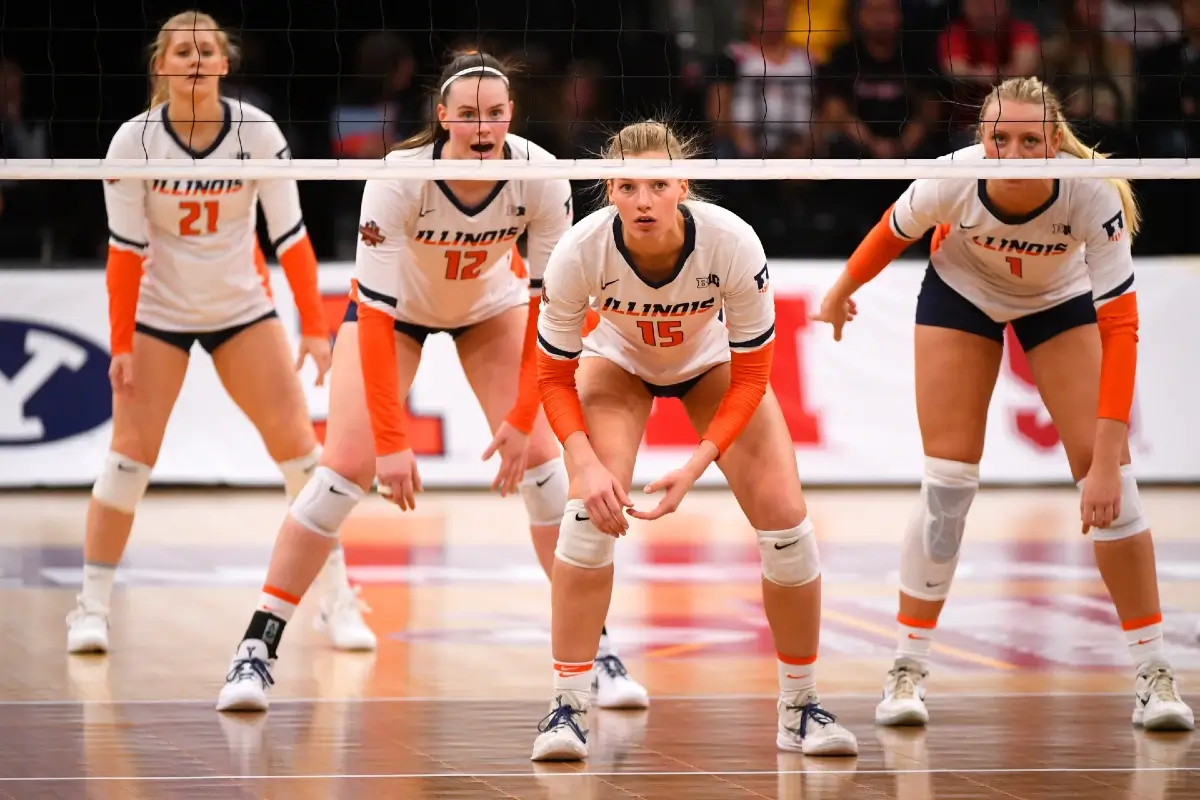Last Updated: March 1, 2024
Orchestrating a superior strategy in volleyball is mainly about choosing the right rotations and techniques to showcase your players’ strengths, but also adapting all these to match the opponent team. Simply put, each game should be planned in a unique manner.
There are quite a bunch of different rotations out there, each of them with pluses and minuses. When not sure where to start, it pays off learning from professional teams that dominate this sport.

Tactical finesse is difficult to achieve, but you’ll never be able to do it if you don’t try everything first.
With these thoughts in mind, here are some smart rotations that can give your team a competitive edge.
6-2 Made Easy
Most people would agree that the 6-2 rotation is a classic. The problem is no matter how popular it is, lots of teams fail to implement it properly. This is the type of rotation many big teams rely on, as it does require a bit of skill and experience.
The concept behind it is fairly simple to understand. The team has two setters and six hitters. In the classic rotation, setters hang around the front and back center. As for the hitters, all players hit in rotation, so literally everyone on the court is an attacker.
One of the designated setters will stay in position, and three players will act as the main hitters. With three hitters close to the net, this rotation is quite aggressive if executed correctly.
Just like any other popular rotation out there, it does have a few variations. And believe it or not, that’s perfectly normal, as every coach will try to adjust this rotation based on their players’ strengths and weaknesses.
Although it’s most commonly used by top teams, more and more amateur volleyball teams try to work on it too, yet it takes time and skill to master.
6-6 For Variety
The 6-6 formation is definitely a surprising one, at least for the opponent team. The formation is mainly aimed at teams where every player can assume any random position. Basically, anyone can be a setter, a hitter or a defender, it makes no difference.
In theory, it’s not a formation for top teams. Big teams have specialized players. It’s mainly aimed at amateur volleyball teams. However, that’s exactly what makes it such an explosive tactic. When everyone gets a completely different position no one expects, the opponent team will be dazzled.
As a general rule of thumb, 6-6 is used with new teams, as well as young players. This way, everyone gets to try out different positions, so they figure out what they’re good at. Coaches will use it to identify their best setters or hitters.
But that’s exactly why it’s successful at the top, too. It’s the element of surprise. No one expects a professional setter to turn into a defensive specialist. And then, if you think about it, volleyball is often about surprising the opponent.
4-2 Explained
Like 6-2, 4-2 is a pretty popular formation and for some good reasons. It has two setters, which usually play in opposite positions. This means a good coach can always rely on the element of surprise. As for the other four players, they usually act as hitters.
4-2 is frequently used, yet it’s rarely mastered. It’s a classic concept, but what makes it special is the possibility of adjusting it based on the players’ skills and strengths. In fact, its variations are unique and developed with lots of training.
During a game, the player who sets next will always hang around the central part of the front row. But since there are more setters, it’s perfectly fine for them to swap positions.
5-1 For Surprises
5-1 is another top formation used by many teams in professional leagues. It’s also used at a more amateur level. The rotation implies having a designated setter as well as five hitters. In theory, it works well. But it has a minus.
Since there’s only one setter, the opponent team can quickly identify the player and pay more attention to them. In other words, it works well, but it can backfire too. It makes no difference where the setter is during a rotation, they’ll always have to set.
On a more positive note, the setter has more flexibility. Despite the responsibility to set all the time, they can also become surprise attackers. As for the location on the court, they can do it from the back or the front, it makes no difference.
There’s still a bit of surprise if the setter is used correctly. Sure, the opponent can identify this player, but their high level of flexibility can make the difference.
W Rotation For Newbies
The W rotation is similar to the 6-6 formation. The one thing they have in common is the fact that any player can have any position. That’s why this position is mostly recommended to young and new teams. When players aren’t specialized yet, coaches need to try out more options to figure out what they’re good at.
In this case, anyone can be a hitter or a setter, for example. This rotation gives everyone the opportunity to practice different positions.
At an amateur level, it’s a matter of practice. At a professional level, it’s the element of surprise. Imagine the surprise when the setter suddenly becomes a defensive specialist, and a defender joins the attack out of nowhere.
While considered an amateur rotation, the W strategy can work wonders if used correctly and at the right time. It could take a team out of a stuck situation, but it could also ruin everything the opponent team has learned about it.
Final Thoughts
In the end, these are by far the most common rotations you’ll find the top teams employing. Unsurprisingly, 6-2 and 5-1 dominate and not necessarily in a basic form, but with their numerous variations, which must be adapted to every team.
While there are other formations as well, these ones offer the most successful approach if implemented by the book.
